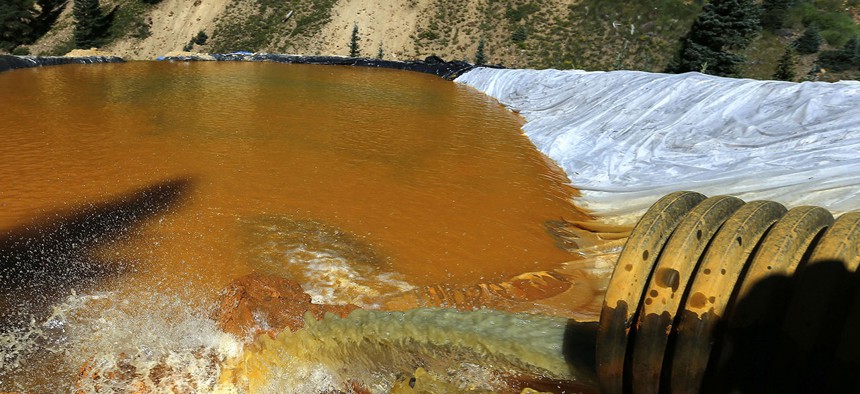
The Animas River turned orange in 2015. Brennan Linsley/AP file photo
The Navajo, the EPA, and the Accident That Turned a River Orange
The Navajo Nation is suing the federal government over a spill that sent more than 3 million gallons of toxic water into a major river last year.
Leaders with the Navajo Nation said they will file a lawsuit against the Environmental Protection Agency for its role in a large mine spill in 2015, which contaminated a major river with 3 million gallons of toxic acid and metals.
The Navajo Nation joins the state of New Mexico, which filed a suit against the EPA for allegedly causing the spill, known as the Gold King Mine Spill, and against the state of Colorado for not doing more to prevent it. The spill is still under criminal investigation, but a federal report released in April found the EPA at fault. The agency had drilled in the area to install drainage pipes below the Gold King Mine because small amounts of toxic water were flowing into the Animas River.
In August 2015, while workers contracted by the EPA tried to drain some of the toxic water, a massive blowout sent a mix of arsenic, zinc, lead, and mercury into the river, which turned the waters orange and flowed downstream, depositing more than 888,000 pounds of toxic metals in the water.
This is what the river looked like a day after the spill:
PHOTOS: A look back at the Gold King Mine Spill https://t.co/nIpRuSTPac via @denverphotos pic.twitter.com/ubB89Fef5U
— The Denver Post (@denverpost) August 5, 2016
The contaminated water flowed down the river and into New Mexico, Utah, and the Navajo Nation, ruining water supplies for towns and killing fish and wildlife.
The Denver Post reported attorneys with New Mexico estimated the damage resulting from the spill to be at least $7 million, and possibly $140 million more in economic harm, like reduced tourism. Leaders with the Navajo Nation have not said how much damage the spill caused to their communities. But in April, in his testimony to the Senate Committee on Indian Affairs, Navajo Nation President Russell Begaye said the spill killed crops and eliminated farming jobs in the region that depended on the water.






